Top 10
Botanical Gardens
Easy Grow takes you on a worldwide tour of some of the best botanical gardens. Botanical gardens hold both a cultural and scientific significance and there has been an increased interest in them since the conservation movement. Here we bring you our personal favourites from around the globe, and one for the future.
The Definition of a Botanical Garden – A botanical garden is a garden dedicated to the collection, cultivation and display of a huge array of plants labelled with their botanical names.
THE HISTORY OF BOTANTICAL GARDENS
Botanical gardens are often run by universities or scientific research organisations. Their role is to maintain documented collections of living plants for the purposes of conservation, scientific research, display, and education.
The origin of botanical gardens can be traced back to European medieval medicinal gardens known as physic gardens. The Chelsea Physic Garden in London was founded in 1673 to study the medicinal qualities of plants and it became one of the most important centres of botany and plant exchange in the world.
As time has moved forward, botanical gardens have responded to the interests of botany and horticulture. Presently most botanical gardens display a mix of themes; having strong connections with the public, there is the opportunity to provide visitors with information relating to the environmental issues facing the world, especially those relating to plant conservation.
Recently botanic gardens have seen a revival as scientific institutions due to the emergence of the conservation movement. They are now seen as hugely important due to their existing collections and the scientific knowledge they possess in the propagation of plant species.
There are now estimated to be 1775 botanic gardens in 148 countries around the world with many more under construction.
Top 10 Botanical Gardens in the World
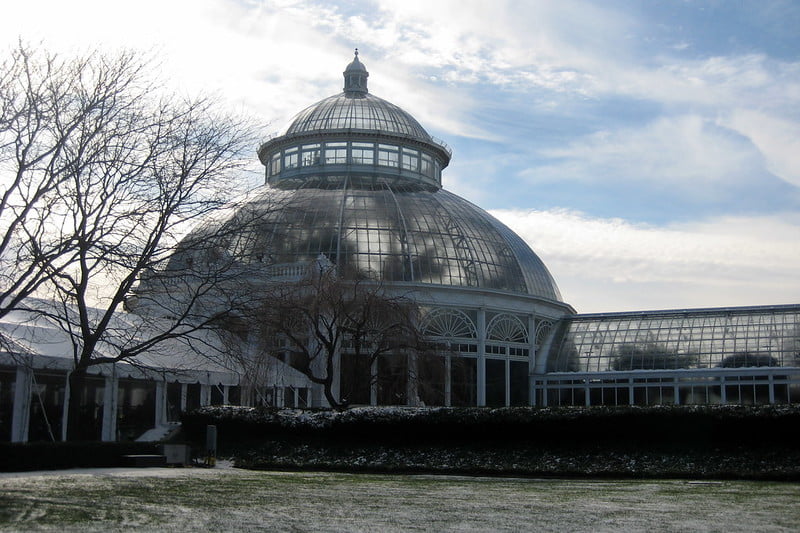
Location: New York, USA
This garden contains 50 different gardens and plant collections. Garden highlights include an 1890s-vintage, wrought-iron framed, “crystal-palace style” greenhouse; the Peggy Rockefeller Rose Garden; a rock garden; a 37-acre conifer collection; extensive research facilities including a propagation centre, 550,000-volume library, and an herbarium of over seven million botanical specimens dating back more than three centuries.
At the heart of the Garden is 50 acres of old-growth forest, the largest remnant of the original forest which covered all of New York City before the arrival of European settlers in the 17th century.
For more information, to book tickets, or support this botanical garden visit their website: www.nybg.org
Sydney, Australia
The Royal Botanic Gardens is a major botanical garden located in the heart of Sydney, Australia. Opened in 1816, the garden is the oldest scientific institution in Australia and one of the most important historic botanical institutions in the world. Its stunning position on Sydney Harbour and immediately adjacent to the Sydney Opera House ensure it is one of the most stunning gardens in the world.
Covering 74 acres, the Garden forms a large natural amphitheatre, wrapped around the ‘stage’ of Farm Cove. It’s divided into four major areas called the Lower Gardens, the Middle Gardens, the Palace Gardens and the Bennelong precinct. Within the four major zones are many smaller gardens and features as well as large amounts of lightly wooded lawn areas.
For more information, to plan a visit, or support this botanical garden visit their website: www.rbgsyd.nsw.gov.au
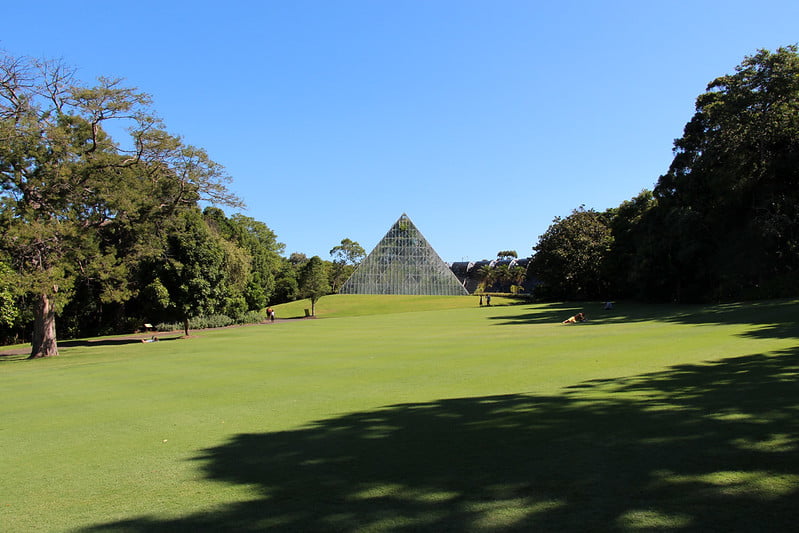
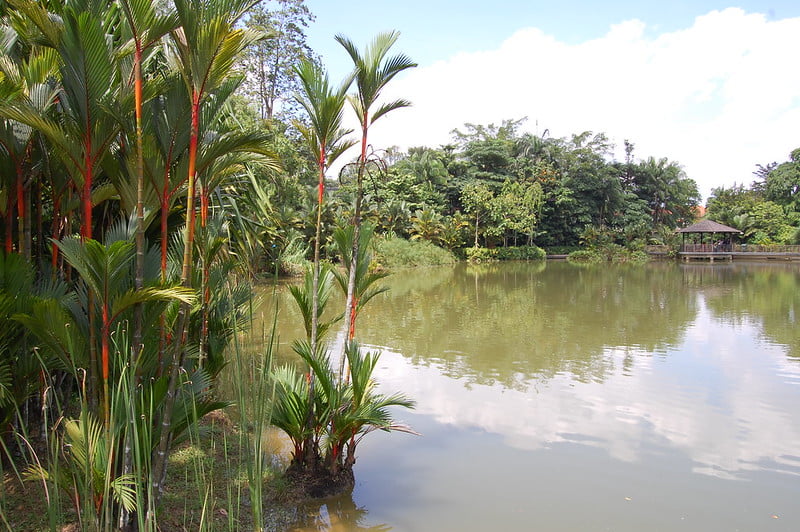
Location: Singapore
Founded in 1859, the Singapore Botanic Gardens is a 183-acre botanical garden in Singapore.
The National Orchid Garden is the main attraction, with the hilly three-hectare site holding a collection of more than 1,000 species and 2,000 hybrids of orchids. The Singapore Botanic Gardens has a small tropical rainforest of around six hectares in size, which is older than the gardens themselves and is in fact one of only 2 tropical rainforests found within a major city, the other being in Rio de Janeiro.
Other attractions include an evolution garden, a ginger garden, wild monkeys, terrapins and much more.
For more information, visiting hours, or to support this botanical garden visit their website: www.nparks.gov.sg/sbg
Cape Town, South Africa
Located at the foot of Table Mountain, this 89 acres garden was founded in 1913 to preserve the country’s unique flora. It’s one of the few botanical gardens in the world that only cultivate indigenous plants with the botanical garden established for the express purpose of local flora conservation, and even now, almost all the species therein are indigenous. Perhaps most famous is the garden’s trademark Crane Flower, a yellow version of which is named Mandela’s Gold.
The garden includes a large conservatory exhibiting plants from a number of different regions, including savanna, fynbos, karoo and others. Outdoors, the focus is on plants native to the Cape region, highlighted by the spectacular collections of proteas.
For more information, to plan a visit, or support this botanical garden visit their website: www.sanbi.org/gardens/kirstenbosch
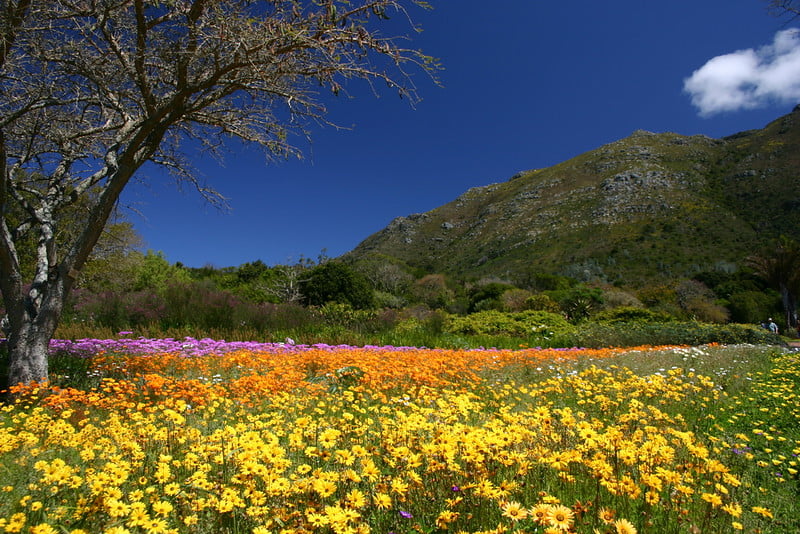
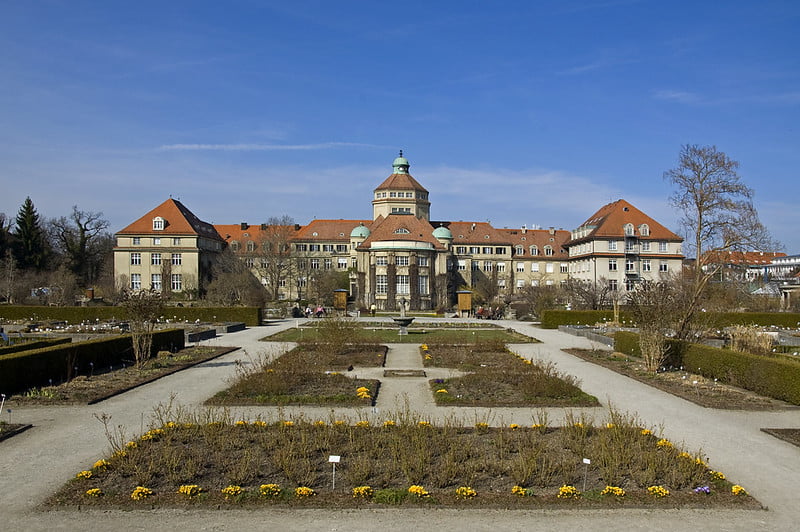
Location: Munich, Germany
Munich’s first botanical garden, now called the “old botanical garden”, was established in 1809 to designs by Friedrich Ludwig von Sckell near Karlsplatz, where its remains are still visible.
The garden cultivates around 14,000 species on 18 hectares, and serves to educate the public and train students, as well as preserve rare plants and European bee species. Major areas include an alpine garden, arboretum, collection of moor and steppe plants, rhododendrons, rose garden, and systematic garden.
The garden also contains an extensive greenhouse complex, including rooms for bromeliads and arecaceae, cactus and succulents, cycads, ferns, orchids, and Mexican plants. The orchid collection includes over 2700 species from 270 genera, as well as hybrids. Featuring the Great Pavilion, which is the largest glasshouse in the world and contains an exhibit of giant bamboo.
For more information, visiting hours, or to support this botanical garden visit their website: www.botmuc.de
Location: Padua, Italy
We couldn’t have the top 10 without including the oldest surviving botanical garden in the world, the world’s first botanical garden, created in Padua in 1545. It still preserves its original layout – a circular central plot, symbolising the world, surrounded by a ring of water. It continues to serve its original purpose as a centre for scientific research. The garden, affiliated with the University of Padua, currently covers roughly 22,000 square meters, and is known for its special collections and historical design.
For more information, to plan a visit, or support this botanical garden visit their website: www.ortobotanicopd.it
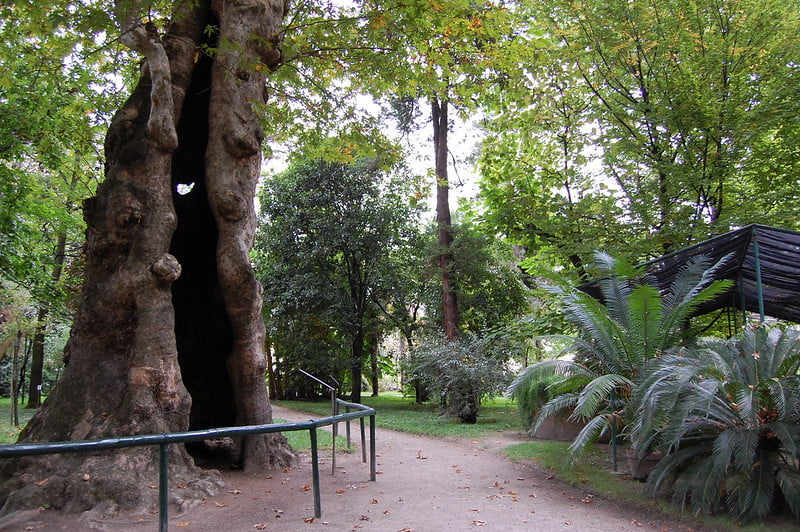
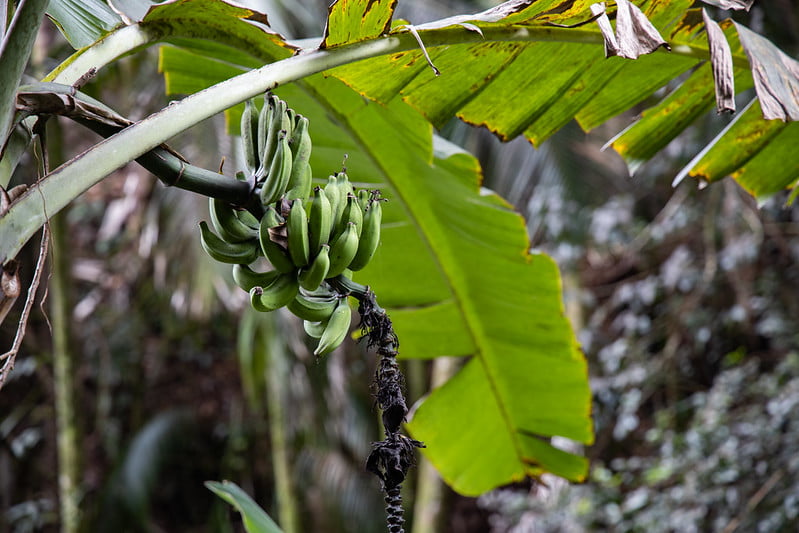
LOCATION: Pāpa’ikou, Hawaii
The Hawaii Tropical Botanical Garden, opened in 1984 and covering 17 acres is a nonprofit botanical garden and nature preserve located on a 4 mile scenic route. The garden is located in a scenic valley opening out to Onomea Bay, and features streams, waterfalls and a boardwalk along the ocean.
Today the garden contains over 2,000 plant species, representing more than 125 families and 750 genera, with good collections of palms, heliconias and bromeliads. Some of the garden’s mango and coconut palm trees are over 100 years old.
For more information, visiting hours, or to support this botanical garden visit their website: www.htbg.com
Location: Montreal, Canada
The garden, which was founded in 1931, takes advantage of both indoor and outdoor spaces to provide a year-round treasure to visitors. In warmer months, the 30 themed gardens is the best place to visit. Highlights include the largest Chinese Garden outside Asia and the Japanese Garden, dedicated to bonsai and featuring some exquisite water features, as well as a First-Nations Garden that focuses on the cultivation of North American crops.
In cooler weather visitors head indoors to the Insectarium, containing 160,000 live and preserved bug specimens. The highlight is the Butterflies Go Free exhibit, during which thousands of live tropical butterflies and moths are released into the glasshouses.”
For more information, to plan a visit, or support this botanical garden visit their website: www.espacepourlavie.ca/jardin-botanique
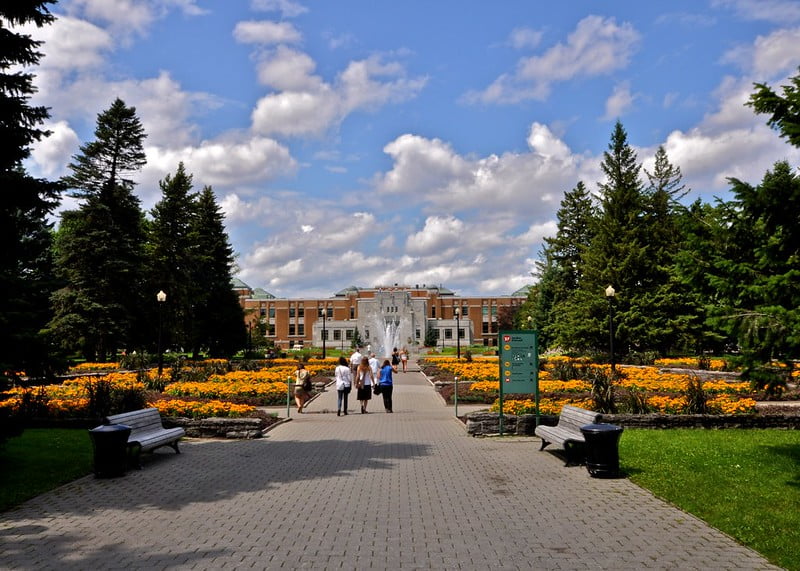
“Jardin Botanique de Montreal” by Geoff Livingston is licensed under CC BY-ND 2.0
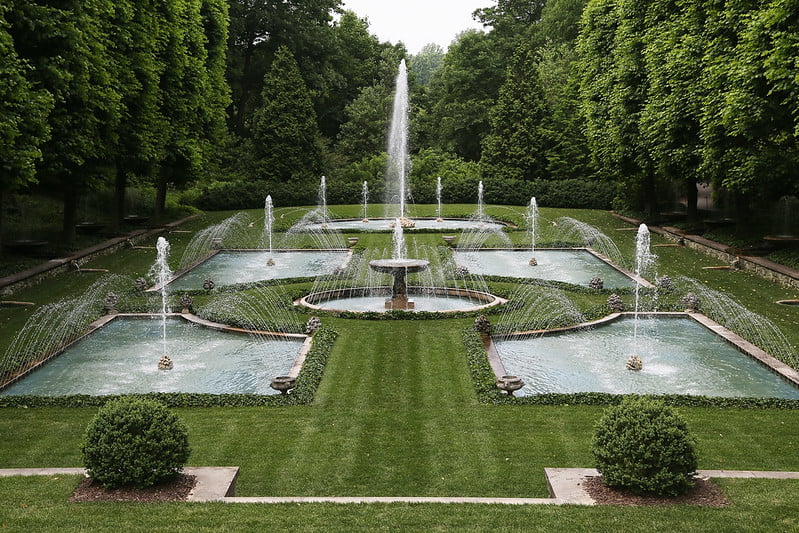
LOCATION: Philadelphia, USA
Longwood’s conservatory is one of the world’s greatest greenhouse structures. The conservatory alone is home to 5,500 types of plants. An exploration of the 20 indoor gardens takes a couple of hours.
Highlights include: The Orangery, Silver Garden, Acacia Passage, Orchid House, Cascade Garden, Palm House, Mediterranean Garden, Tropical Terrace and the Outdoor Water Garden.
For more information, visiting hours, or to support this botanical garden visit their website: www.longwoodgardens.org
Location: London, England
We’ve featured the oldest botanical gardens in the world, but our number one botanical gardens had to be the biggest, Kew Royal Gardens in London, England.
Kew Gardens is the world’s largest collection of living plants. Founded in 1840 from the exotic garden at Kew Park in the London Borough of Richmond upon Thames, UK, its collections include more than 30,000 different species of plants, while the herbarium has over seven million preserved plant specimens.
With over 320 acres of landscapes and gardens, including a soaring treetop walkway, 18 metres high and 200 metres long, tropical glasshouses, art galleries, a serene lake and waterlily pools.
Kew’s glasshouses provide hours of undercover discoveries. With amazing giant lily pads in the Waterlily House, exotic rainforests in the Palm House, and 10 climatic zones in the Princess of Wales Conservatory. While Kew Palace and the Royal Kitchens allows you to discover Kew’s history and explore a beautiful Georgian royal retreat.
One of the most interesting features of the garden is the Davies Alpine House, an eco-friendly building that houses cool weather plants without the use of refrigeration, instead relying on a series of underground pipes to maintain the appropriate climate.
For more information, to plan a visit, or support this botanical garden visit their website: www.kew.org
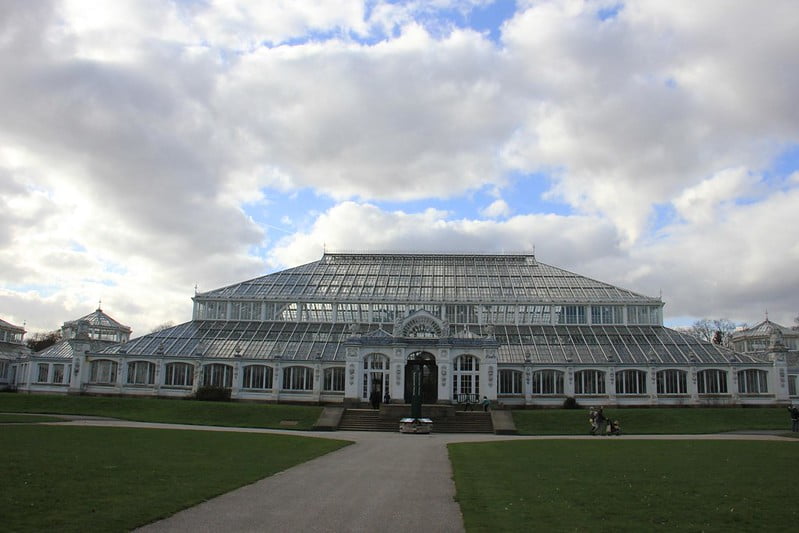
Botanical Garden’s for the Future
Oman Botanical Gardens is a botanic garden currently under construction in the Arabian Peninsula. Located close to Oman’s capital city, Muscat, it is set to be open to the public in a few years. The garden is a governmental project with the aim of conserving the biodiversity and botanical heritage of Oman for a sustainable world. The project aim to achieve this by displaying the entire flora of the country in naturalistic habitat plantings and include extensive exhibitions about the plants and how they are used.
The site, over 1000 acres of the botanic garden, was selected as for its ease of access, beauty, dramatic landscape and plant diversity – with 10% of Oman’s native flora already naturally present. It will house the first large scale internal fog-forest in a huge glasshouse.
Oman is home to 1200 species of plant, of which 79 are endemic – found nowhere else in the world. About 20% of Oman’s plants are range-restricted or face threats such as over-grazing, inappropriate development and climate change.
Other Botanical Gardens around the World
These ten botanical gardens are all stunning, however they are by no means the only ones out there. Most major cities around the world offer their own botanic garden and come in a variety of shapes and sizes. With over 1775 botanical gardens around the world.
14 Comments
Submit a Comment
Want to read more blog posts?
Head back to the blog home page for more resources and information!



Where is lancetilla botanical garden on this list? Is in Honduras and is so amzing
Wow! They are very impressive! This was just a list of our personal favourite and unfortunately with so many amazing gardens in the world it was impossible to include them all. Maybe we will do a follow up one day with our readers top 10. Thanks for the feedback
Where is Kolkata botanical Garden, and lead Botanical Gargen Kolhapur !!!
These both look very good! Thanks for the suggestions Sachin, next time we’re in India we’ll check them out and maybe they’ll be in our follow up!
What about “Botanical garden greater noida, India”
I´m missing the Berggarten in Hannover, Germany. Its part of the Herrenhausen Gardens and has several themed greenhouses, one with one of the biggest Orchid Collections at least in Europe!
Great place to visit(and to study, the university is right next door).
Hi. It says that the biggest one in the world is the one in UK, But Honduras Lancetilla Botanical Garden is 1,681 hectares. You should double check your information.
Hi Christopher, we stand corrected! Kew gardens is in fact the largest and most diverse botanical and mycological collections in the world.
Lancetilla in Honduras dwarfs the Kew. Lol; do your research.
It looks like from what you say that Lancetilla is the largest in terms of area. I think the author suggests that Kew is the largest in terms of number of plants or specimens.
The authors of the list urgently need to fly to Rio.
In this site kindly mentioned the list and information of botanical gardens country wise, It would be beneficial for students and researchers.
you should include Aburi Gardens in Ghana. It is amazing and a worth addition to this list.
Kew Gardens? No way, obviously you haven’t seen on the Black Sea, Batumi Gardens, with trees from Japan, China, Australia, north south America, Europe…. Outstanding